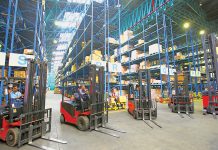Consumer purchase patterns in a post-crisis world are directly proportional to the swiftness, and convenience of deliveries. Brought on by the pandemic, consumers now look forward to doorstep deliveries, at the time of their choosing and often, in the shortest period possible. Instead of venturing out, the purchase patterns are now moving towards a preference for Q-commerce including groceries. In cognizance of the same, an assemblage of hyperlocal delivery apps is taking the nation by storm.
This adaption of the hyperlocal model in our daily lives has now become the need of the hour. Industry agnostic in its application Hyperlocal has varied uses in pharma, food, groceries etc., sectors. Behemoths like Zomato, Swiggy, Dunzo etc., have pioneered the sector and many startups and now even established industry players are adopting hyperlocal modules and instant delivery has become quite the rage.
The sector in India however is different from the countries with mature global markets such as Japan and US. Due to digitization being in its nascent stage in our country and the current pandemic situation, the Indian hyperlocal segments focus more on delivery essentials and especially food and groceries. Catapulted by the need to stay ahead of the curve and have the biggest piece of the pie, restaurant aggregators and delivery apps are offering massive offers, combos, and discounts. In 2021, Zomato came out on the top with the most downloads while Swiggy came in second and Bigbasket was third with 6.1 Mn downloads.
Zomato and Swiggy are the established authorities in the hyperlocal segment but Grofers, Bigbasket and even Zepto the relatively new company on the block did pose a tough challenge for them. With favorable funding to augment its growth Zepto beat both Dunzo and Milkbasket in terms of app power.
Turbocharged by the consumer’s preference for shopping from the comfort of their couch, the hyperlocal delivery operations are committed to rush or rapid delivery time slots. Swiggy starred in this trend with delivery commitment within 15-30 minutes through its InstaMart service. Grofers followed the lead with the 10 minutes grocery deliveries but later called it off. Dunzo also hopped on the bandwagon with the 19-minute delivery slot through its dark stores – Xpress mart.
Even though hyperlocal is the established norm pushing established companies and startups to enter the space, the issues of low average order value (AOV) and high delivery cost were bleeding the setups dry. This led to a further extension of verticals and delivery apps stepping out of the food delivery marketplaces to bring the delivery of essential and non-essential FMCG into its fold. Entering the segment, veteran company Grofers scaled up and rebranded itself as Blinkit to disrupt food and grocery deliveries, traditionally led by Zomato, Swiggy and BigBasket. The latest contender has been Reliance Industries with their conglomerate now entering the quick commerce space with $200 Mn in funding to Dunzo for a 25.8% stake. In conclusion, industry veterans to startups to tech giants have already jumped on the bandwagon to leverage hyperlocal’s potential and the market remains stretched in various directions by committing to none and opting for the most cost-effective, convenient, and time-optimized options available while varied entities grapple to outdo each other.
Author: Manu George – Head (Hyperlocal Business) at CABT Logistics













